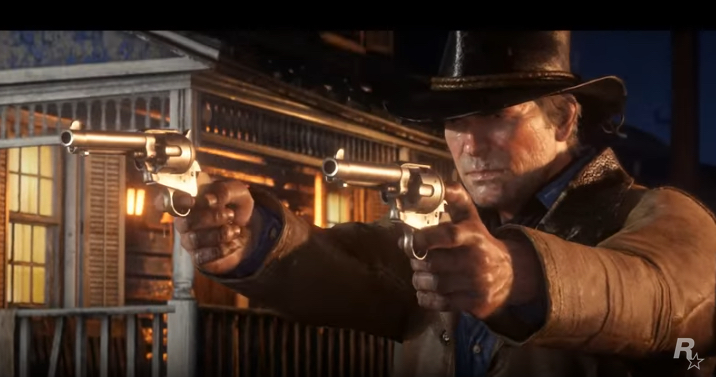Certain truths can be stated without reservation. FACT ONE: American youth love video games. And, FACT TWO: Guns have been a large part of our history and culture for hundreds of years. Here’s another: Without the constant renewal and growth of new participants, the gun culture and shooting sports will wither and die, and the Second Amendment will be closely behind it. The Second Amendment would become a quaint reminder of a distant past, then, gradually, incrementally, be reduced to an abstract symbolic concept.
If one were to set out to address the challenge of finding new participants for the shooting sports, where would you look and who would you look for? Well, it would be nice to target young people, heaven knows the more “mature” crowd is already well represented! It would also make sense to target people who already have demonstrated some interest in and knowledge of guns.
This ideal demographic of future competitive shooters, firearms enthusiasts, and Second Amendment activists exists within the world of video gaming. We know from anecdotal evidence that the cross-pollination opportunity between the video gaming culture and the “real” gun culture is significant. In fact, even the briefest look at the gaming industry reveals the staggering scale of the numbers involved. Gaming is huge! According to the Pew Internet & American Life Project, 97% of all teenagers play video games; and 81% of 18-to-29 year olds are gaming, and a large percentage of those games are based on shooting and gun themes. For example, the ‘Red Dead Redemption Part 2 Cowboy’ action game grossed over $725 million its opening weekend and has sold over 25 million copies.

In fact, my own introduction into the world of firearms was the indirect result of video games. My sons’ interest in guns was piqued after playing video games, which lead to an interest in paintball and airsoft guns. Realizing quickly if I had declared real guns forbidden it would have only strengthened the attraction, I embarked on a mission to learn all I could about safe gun use in order to educate my sons and keep them safe. I reached out to a knowledgeable gun-owning friend, who gave us a brief introduction to guns and recommended a safety training class. To my great joy, guns and the shooting sports have become a central part of our lives ever since, providing countless hours of enjoyment and family bonding.
Of course, only a small percentage of gamers will make the leap from shooting guns in video games to shooting guns in real life.
But a small percentage of a big number is still a big number. There are barriers to entry that must be overcome. Not everyone has a gun-owning friend (that they know of) to whom they can reach out. With this in mind, the National Shooting Sports Foundation (NSSF), promotes the excellent “First Shots Program” offered at many local shooting ranges. The program is geared towards safely introducing first-time shooters to the fun of shooting.
Andrew Gottlieb, Director of Outreach for the Second Amendment Foundation, has begun some excellent work on the issue of gaming and how it relates to the Second Amendment. A key point he made in his presentation at the 34th Annual Gun Rights Policy Conference in Phoenix related to the inevitable blame-game and finger-pointing that occurs whenever a mass murder event occurs and it’s subsequently revealed the “murderer was a video game player”. Mr. Gottlieb said plainly “The gun people need to stop pointing to the video games as the cause, because that just makes the gamers point back to the gun as the cause when both parties should be pointing to the acts of the individual perpetrator!” I must admit, I have been tempted myself to point to games as a causal factor; however, considering how pervasive gaming actually is you might as well point to shoes as the cause of mass murder because as far as I know most murderers aren’t barefoot! Alas, there are not simple answers to complex problems.
As firearms enthusiasts, gun owners and Second Amendment advocates, let’s actively look for ways to reach out to the people who are already interested in what we do. Get out there and find a gamer to take shooting, it’ll be a blast!
